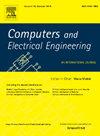基于b区块链的边缘工业物联网网络拒绝服务攻击检测与分类的深度迁移学习模型
IF 4.9
3区 计算机科学
Q1 COMPUTER SCIENCE, HARDWARE & ARCHITECTURE
引用次数: 0
摘要
随着物联网(IoT)和人工智能(AI)的快速发展,工业4.0时代已经到来。根据IBM的预测,随着5G技术的不断普及,物联网将在工业中得到更广泛的应用。近年来,联邦学习(FL)成为工业物联网(IIoT)学者关注的焦点。相反,目前工业物联网中的许多设备都存在计算能力低的问题,因此这些设备在挑战FL中的更新和训练方法任务时无法正常运行。机器学习(ML)和深度学习(DL)方法的最新发展将有助于加强这些ids。这些数据库的保密性和战斗爆发的广泛出现,使主要机构难以传输其脆弱的数据。因此,本研究为bc支持的工业物联网环境设计了一个使用深度迁移学习(FLDoSADC-DTL)模型的拒绝服务攻击检测和分类联邦学习。提出的FLDoSADC-DTL方法的目的是识别基于bc的IIoT环境中存在的DoS攻击。为了在IIoT网络中实现安全通信,使用了BC技术。为了实现这一点,FLDoSADC-DTL技术执行基于沙猫群算法(SCSA)的特征子集选择。在DoS攻击检测过程中,本文采用了堆叠自编码器(SAE)模型。最后,利用黑寡妇优化算法(BWOA)实现SAE技术的超参数整定。大量的实验表明,FLDoSADC-DTL方法具有较高的性能。完整的实验结果表明,FLDoSADC-DTL方法的性能优于其他最新方法。本文章由计算机程序翻译,如有差异,请以英文原文为准。
Federated learning with Blockchain on Denial-of-Service attacks detection and classification of edge IIoT networks using Deep Transfer Learning model
With the rapid evolution of Internet of Things (IoT) and artificial intelligence (AI), the industry 4.0 era has arisen. As per the IBM prediction, by the constant spread of 5G technology, the IoT intend to be more extensively utilized in industries. Recently, federated learning (FL) turned out to be significant focus among Industrial IoT (IIoT) scholars. Conversely, numerous devices in IIoT presently hold an issue of low computational power, so these devices can't able to function well while challenging the updating and training method tasks in FL. The latest development of machine learning (ML) and deep learning (DL) approaches will help to reinforce these IDSs. The secrecy behaviour of these databases and extensive advent of combative outbreaks makes it challenging for main institutions to transmit their fragile data. Therefore, the current study designs a Federated Learning on Denial-of-Service Attacks Detection and Classification using Deep Transfer Learning (FLDoSADC-DTL) model for BC-supported IIoT environment. The aim of the presented FLDoSADC-DTL approach is to recognize the presence of DoS attacks in the BC-based IIoT environment. To enable secure communication in the IIoT networks, BC technology is used. To accomplish this, the FLDoSADC-DTL technique performs sand cat swarm algorithm (SCSA) based feature subset selection. For the DoS attack detection process, a stacked auto-encoder (SAE) model is utilized in this study. Finally, the black widow optimization algorithm (BWOA) can be implemented for hyperparameter tuning of the SAE technique. A widespread of experiments were performed to emphasize the higher performance of FLDoSADC-DTL method. The complete experimentation outcomes indicated the enhanced performance of FLDoSADC-DTL approach over other recent methods.
求助全文
通过发布文献求助,成功后即可免费获取论文全文。
去求助
来源期刊

Computers & Electrical Engineering
工程技术-工程:电子与电气
CiteScore
9.20
自引率
7.00%
发文量
661
审稿时长
47 days
期刊介绍:
The impact of computers has nowhere been more revolutionary than in electrical engineering. The design, analysis, and operation of electrical and electronic systems are now dominated by computers, a transformation that has been motivated by the natural ease of interface between computers and electrical systems, and the promise of spectacular improvements in speed and efficiency.
Published since 1973, Computers & Electrical Engineering provides rapid publication of topical research into the integration of computer technology and computational techniques with electrical and electronic systems. The journal publishes papers featuring novel implementations of computers and computational techniques in areas like signal and image processing, high-performance computing, parallel processing, and communications. Special attention will be paid to papers describing innovative architectures, algorithms, and software tools.
 求助内容:
求助内容: 应助结果提醒方式:
应助结果提醒方式:


